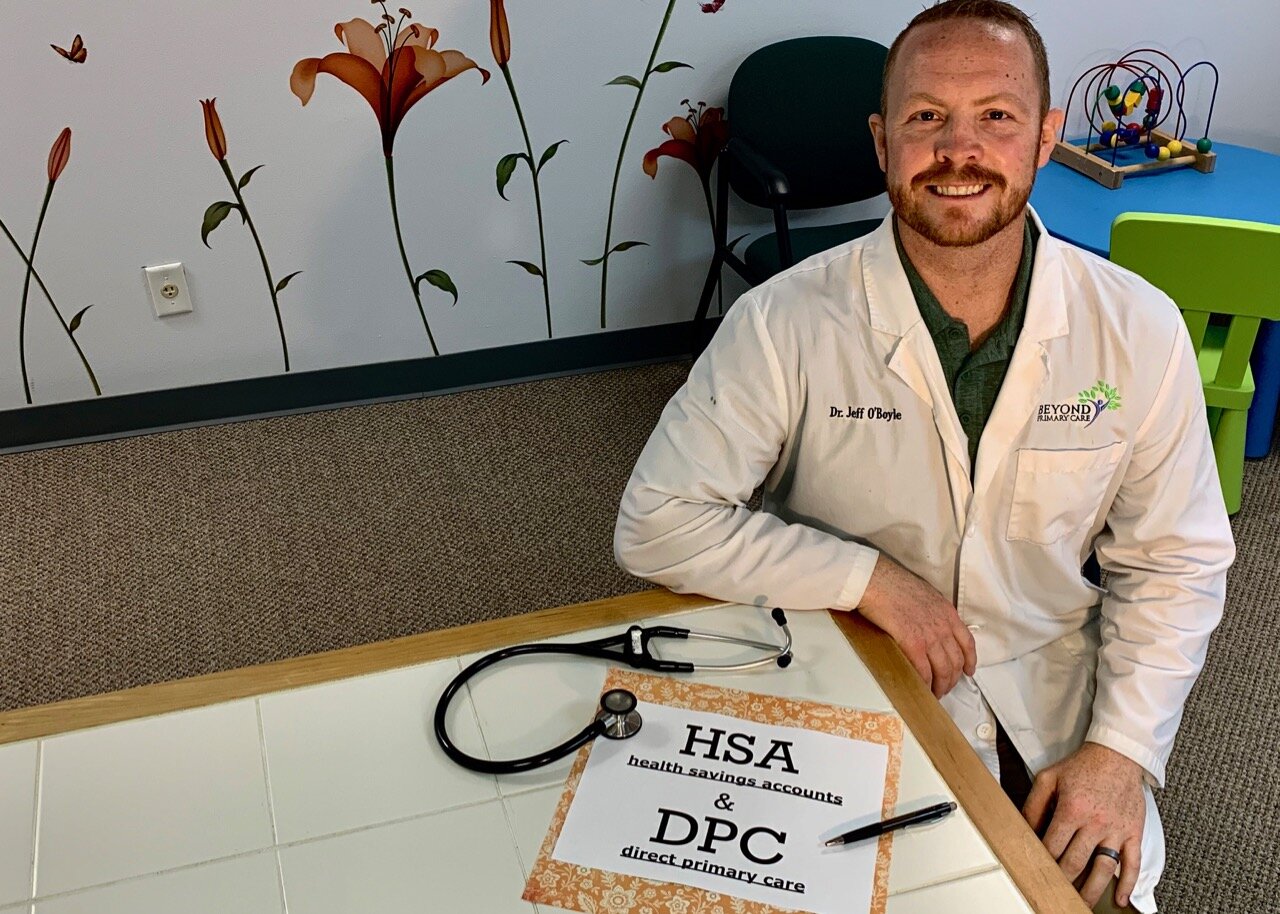Using a Health Saving Account (HSA) with Direct Primary Care
Hi, thank you for coming back for the latest edition of Beyond Primary Care’s blog- Health Benefits: Direct Primary Care Offers Cost Containment To Employers. In Beyond Primary Care blogs we highlight healthcare news, advice for medical conditions, and how membership for care works! Beyond Primary Care is an insurance free, membership based family medicine clinic. Beyond Primary Care is the highest rated Direct Primary Care clinic serving patients in Ann Arbor and throughout Washtenaw, Livingston, and Wayne counties giving families and employers peace of mind about healthcare costs by providing affordable and accessible primary care services.
In this blog post, I wanted to talk about the Health Saving Accounts (HSAs), what they are and how to get one, why they are beneficial for healthcare, how to use it with Direct Primary Care.
Health Saving Accounts: Explained
Health Savings Accounts (HSAs) are a type of savings account where individuals or families can set aside money on a pre-tax basis to pay for qualified medical expenses.
Yup, you read that right- PRE-TAX: if you make a dollar and need to spend that buck on healthcare, it is a full dollar you get to use, not some percentage.
How did this come about? Great question- HSAs are designed to offset some of the expenses of a High Deductible Health Plans (HDHP) such as deductibles and copayments. To qualify for a HSA, you must have a HDHP, defined as an annual out-of-pocket deductible of $1,350 for single coverage or $2,700 for family coverage. I wrote a blog co-authored by a financial advisor that details the financial benefits of HDHPs.
High deductible insurance plans allow you to be covered for major “catastrophic” medical problems: eg- hospitalizations, surgeries, etc- in exchange to agree to pay more money out of your pocket for most or all medical expenses up to a certain limit. Once that limit is met, the consumer could expect near 100% coverage.
For 2020, if you have an HDHP, you can contribute to your HSA up to $3,500 for self-only coverage, and up to $7,100 for family coverage keeping in mind the limits can change year to year.
What are Qualified Medical Expenses
Before dealing what is a ‘Qualified’ medical expenses, let’s first discuss what exactly 'Medical Expenses’ are. According to IRS publication 502, Medical and Dental Expenses, medical expenses are the costs of diagnosis, cure, mitigation, treatment, or prevention of disease, and for the purpose of affecting any part or function of the body. These payments include payments for legal medical services rendered by physicians, surgeons, dentists, and other medical practitioners.
‘Qualified’ or eligible medical expenses are described by IRS code section 213(d). This list is long and includes:
Blood tests
Diagnostic fees
Treatment of alcoholism and other drugs
Durable medical equipment
Chiropractic care, Physical Therapists, Dentists and much more...
How having a Health Savings Account is Beneficial
The HSA provides funds that can be used to pay day-to-day healthcare expenses. HSA benefits important to understand include:
They are tax-free, meaning contributions go in tax-free and withdrawals are taken tax-free provided they’re spent to cover qualified medical expenses.
HSA don’t require you to do mandatory withdrawals every year, so you can leave your balance in there to stay put or grow until a large medical expense presents itself.
Highlighting the importance of the previous benefit, another benefit is that HSAs don’t have to be used up on a yearly basis.
HSAs can be funded through employers to varying degrees.
There are not income limits to contribute to HSAs.
Using a Health Saving Account (HSA) with Direct Primary Care
Like hundreds of other Direct Primary Care (DPC) clinics across the nation, Beyond Primary Care DOES allow our members to use HSA funds to pay for their membership.
The US department of Health and Human Services (HHS) under the Affordable Care Act (ACA) defines DPC as a primary care service, NOT insurance (or a health plan).
Additionally, the ACA allows coupling DPC with a ‘wrap-around’ qualifying health plan, stating that HHS “Shall permit a qualified health plan to provide coverage through a qualified direct primary care medical home that meets criteria established by the Secretary.” Combining the definition from the HHS (not insurance) with HSA eligibility under the ACA allows DPC to embody the premise of HSA in the patient-centered free market.
If needed by the administrators of your HSA and requested by you (our member), Beyond Primary Care will provide an itemized bill with your encounter dates, billing codes, and medical service fees.
HSAs work with the Right Insurance
Many people who talk with me know I don’t hesitate for a second to discuss the unbalanced, non-transparent, maddening administrative business that is health insurance. People know that medical expenses are the #1 cause of bankruptcy in the United States. However, what people don’t realize is that 75% of those individuals actually did have some type of health insurance. Health insurance is the ONLY insurance that bankrupts folks when they use it.
All insurance, since humans first invented it, was designed for one thing and one thing only… to protect us from catastrophic loss.
High Deductible Health Plans are designed to protect us from catastrophic loss. When health insurance is used in this way, a significant amount of money can be saved through reduced monthly premiums and a cost-conscious individual can shop around for the best price for office visits, medications, blood work, imaging, and more.
Note: this blog post is not a substitute for tax advice nor does it suggest how to handle your own unique tax circumstances. If you require tax advice, you should seek the services of a competent professional.
Thank you for reading
- Dr. Jeff O’Boyle

